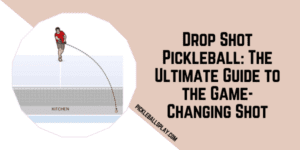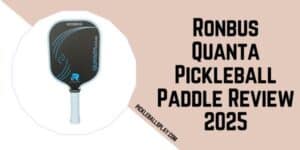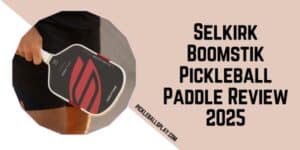What Muscles Does Pickleball Work? If the term is unfamiliar, you may imagine a bizarre game involving pickles and balls. But fear not, pickleball isn’t some food-related battle or clever trick. It’s a delightful sport that combines elements of tennis, badminton, and table tennis.
But that’s not all—pickleball brings with it a multitude of physical and mental benefits. In this article, we’ll explore the muscles involved in pickleball and share effective training methods to amp up your game and overall well-being. So let’s jump right in and discover the realm of health benefits pickleball has to offer!
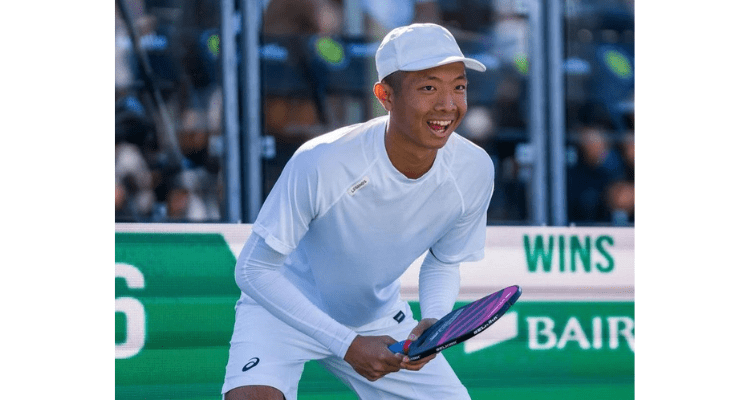
The Muscles That Get Fired Up in Pickleball
Pickleball is a full-body workout that engages various muscle groups, from your upper body and lower body to your core. Here are some of the key muscles that get a good workout during a pickleball match:
Upper Body Muscles
- Shoulders: The shoulders are the most flexible joints in your body and play a crucial role in almost every arm movement in pickleball. Whether you’re serving, smashing, volleying, or drinking, you need strong and stable shoulders to execute these shots. The shoulder muscles include the deltoids, rotator cuff, and trapezius.
- Triceps: The triceps are the muscles on the back of your upper arm that help you extend your forearm. They come into play during backhand strokes, like drinks, drives, and slices. Apart from that, the triceps also stabilize your elbow joint and control your paddle angle.
- Biceps: The biceps are the muscles on the front of your upper arm that assist you in flexing your forearm. They’re especially involved in forehand strokes, including lobs, topspins, and drop shots. Additionally, they allow you to lift your arm and paddle up to prepare for a shot.
- Forearms: The forearms are the muscles connecting your elbow to your wrist. They’re responsible for gripping the paddle and adjusting your wrist position. As you can imagine, these muscles are constantly at work in pickleball, as you need to tighten, loosen, or change your grip depending on the shot you’re aiming for.
- Chest: The chest muscles, including the pectoralis major and minor, play a crucial role in moving your arm across your body. They come into action when you swing your paddle forward or backward, such as during a powerful backhand drive or an overhead smash.
- Back: The back muscles, including the latissimus dorsi, rhomboids, and erector spine, help you move your arm up and down and rotate your torso. Every time you serve, volley, or twist your body to hit the ball from different angles, these muscles get activated.
Lower Body Muscles
- Glutes: The glutes, situated in your buttocks, help extend your hip and stabilize your pelvis. Along with allowing movement in all directions on the court, these muscles also help you generate power from your lower body when hitting the ball.
- Quads: The quads, found on the front of your thighs, enable you to extend the knee and flex the hip. These muscles come into play when you run, jump, lunge, or squat during a pickleball match. On top of that, they help absorb the impact of landings or quick changes in direction.
- Hamstrings: The hamstrings are the muscles located at the back of your thighs. They assist you in flexing the knee and extending the hip, which are essential for running, stopping, or pushing off on the pickleball court. Additionally, they contribute to balance, stability, and overall knee joint health.
- Calves: Last but not least, the calves are the muscles at the back of your lower legs. They help you point your toes and lift your heels, allowing you to sprint, shuffle, or tiptoe across the court. These muscles also work to cushion and propel your movements when hitting or transitioning between shots.
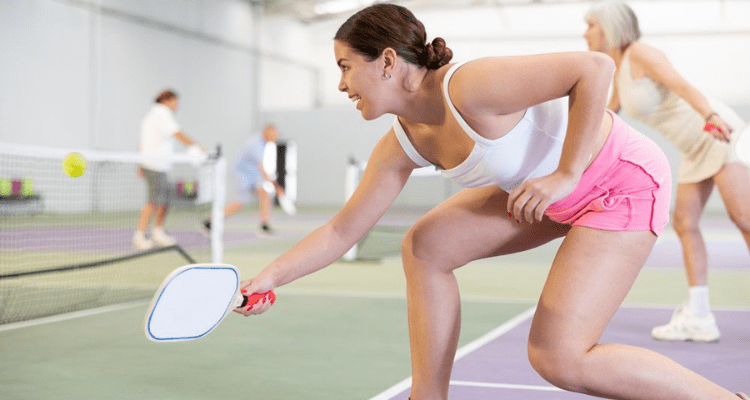
Core Muscles
- Abs: The abs, or your abdominal muscles, are located in the front of your abdomen. They help you flex and rotate your spine, making them crucial for various movements in pickleball. Whether it’s bending forward or sideways to reach low balls or twisting your torso to hit shots from different angles, your abs play a significant role. On top of that, they contribute to maintaining good posture, stability, and power during gameplay.
- Obliques: The obliques, found on the sides of your abdomen, play a vital role in rotating and bending your spine laterally. These muscles help you turn quickly or lean sideways to hit balls near the net or sideline. Moreover, they transfer power from your lower body to your upper body when executing powerful shots.
- Lower Back: The muscles in your lower back, including the erector spine, multifidus, and quadratus lumborum, extend and stabilize your spine. They enable you to stand upright or arch backward to hit high balls or overheads. Working these muscles not only helps prevent lower back pain but also enhances core strength and stability.
Benefits of Working Those Muscles in Pickleball
Working the muscles used in pickleball offers a plethora of benefits for your physical and mental health. Here are some of the advantages you can reap:
- Improved Cardiovascular Fitness: Pickleball gets your heart pumping and increases blood circulation, leading to lower blood pressure, cholesterol, and reduced risk of heart disease or stroke. It also enhances oxygen uptake and delivery, thereby improving endurance and stamina.
- Improved Bone Density: By engaging in pickleball regularly, you can stimulate your bones to become stronger and denser, reducing the risk of osteoporosis or bone loss. It also decreases the chances of fractures or injuries from falls or impacts.
- Improved Muscle Mass: The demanding nature of pickleball challenges your muscles, causing them to grow bigger and stronger. This increase in muscle mass also boosts metabolism and aids in burning calories, which can help with weight maintenance or loss.
- Improved Hand-Eye Coordination: Pickleball hones your eye-tracking skills when following the ball and improves hand control when maneuvering the paddle. This leads to enhanced hand-eye coordination and reaction time. Additionally, it improves spatial awareness and accuracy, resulting in more effective shots.
- Improved Agility and Balance: The constantly changing directions and speeds in pickleball contribute to improved agility and balance. Additionally, the sport strengthens your core muscles, helping you stabilize your body and prevent falls or injuries.
- Improved Mood and Mental Health: Playing pickleball releases endorphins and serotonin, natural chemicals that promote feelings of happiness and relaxation. It also reduces stress, anxiety, depression, and cognitive decline. Moreover, pickleball offers a chance for social interaction and fun, boosting your self-esteem and overall well-being.
How to Train Those Muscles for playing pickleball
To train the muscles utilized in pickleball, you need to focus on two types of exercises: strength training and flexibility training.
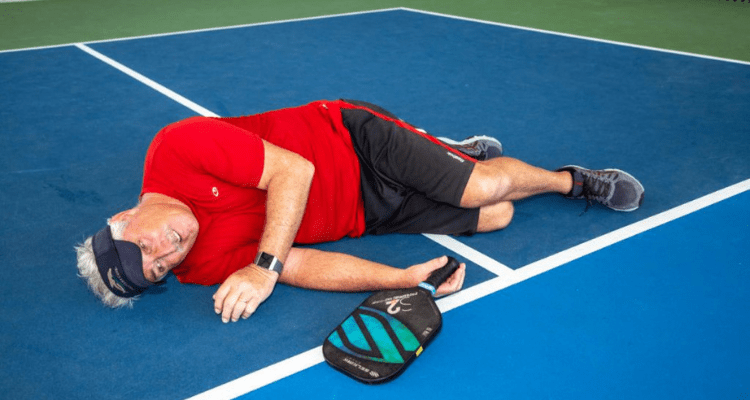
- Strength Training: To strengthen your muscles, you can incorporate various tools such as free weights, machines, bands, or bodyweight exercises. Aim for two to three strength training sessions per week, with at least one day of rest between sessions.
Your focus should be on the major muscle groups used in pickleball. That includes the shoulders, triceps, biceps, forearms, chest, back, glutes, quads, hamstrings, calves, abs, obliques, and lower back. Perform eight to twelve repetitions of each exercise for two to three sets, using a moderate to heavy weight that challenges you while maintaining good form. Don’t forget to mix up your workouts and intensity levels to avoid hitting plateaus or feeling bored.
- Flexibility Training: Improving flexibility can be achieved through static or dynamic stretches. Aim to spend at least 10 minutes stretching before and after each pickleball or strength training session.
Focus on stretching the major muscle groups used during pickleball matches and the joints involved in pickleball movements. These include the shoulders, elbows, wrists, hips, knees, ankles, and spine. Hold each static stretch for 15 to 30 seconds without bouncing or forcing it. For dynamic stretches, perform each movement smoothly and with control for 10 to 15 repetitions.
Answering Your FAQs
What muscles get sore from pickleball?
Typically, the muscles that get sore from pickleball are the ones that are used the most during the game. This includes the shoulders, triceps, forearms, glutes, quads, and calves. Fatigue or inflammation in these muscles can occur due to overuse or improper technique.
What are the physical benefits of pickleball?
The physical benefits of pickleball are vast! They include improved cardiovascular fitness, enhanced bone density, increased muscle mass, effective weight management, improved hand-eye coordination, enhanced agility and balance, and decreased risks of heart disease, stroke, osteoporosis, and injuries.
Does pickleball build leg muscles?
Absolutely! Pickleball is an incredible sport for building leg muscles. The dynamic movements involved in running, shuffling, lunging, squatting, and changing directions activate muscles like the glutes, quads, hamstrings, and calves. These muscles generate power, stability, and mobility in your lower body.
Can pickleball get you in shape?
You bet! Pickleball is a fantastic way to get in shape. It provides a full-body workout that burns calories, strengthens muscles, and improves cardiovascular health. Aside from physical benefits, pickleball also brings a range of mental health advantages, including endorphin and serotonin release, stress reduction, and social interaction.
Wrapping It Up!
Pickleball isn’t just a game—it’s a gateway to a healthier and happier you. By training the muscles used in pickleball through strength and flexibility exercises, you can elevate your game and improve your overall well-being.
So what are you waiting for? Grab a paddle, grab a ball, and let’s step onto the pickleball court to embark on an epic journey of physical and mental transformation!
